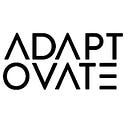Is Dr House an agile practitioner?
A blog from by our co-founder Alex Rebkowski
There are many that would like to believe that agile is the latest fad invented by consultants to sell projects. For me, agile is just common sense — an attempt to codify and systematise the way high performing teams operate.
Have you ever binge watched House, Grey’s Anatomy, ER or a similar tv show about high performing medical professionals? If yes, then you probably intuitively already understand the key aspects of agile.
House — despite his many quirks — consistently follows many of the agile principles. As does Grey’s Anatomy’s McDreamy and the medical team in ER (remember George Clooney as Dr Doug Ross?). So do triage teams all around the world. Not because agile is fad, but because the stakes are high and over hundreds of years we’ve evolved the system to allow these teams to function at their best. Here’s how they do it:
1) Autonomous teams- the team performing the medical triage is fully accountable and empowered to take decisions that save the patient’s life and improve their health. Yes, there are many levels of hospital administration above them, but they are there to manage the overall functioning of the facility, remove roadblocks, and solve logistical challenges to prevent them from distracting medical teams. They do not become involved in the triage — it is widely understood that the team closest to the patient (“the customer” in agile terminology) has the best insights in to the patient’s health and is best positioned to exercise their judgement to get to a positive outcome.
2) Aligned resources -when choosing a hospital we all intuitively understand the importance of doctors having access to resources allowing them to perform their duties to the best of their abilities. That’s why we do our research and choose the best hospital in the area and that’s why we spend billions of dollars on health insurance, so that we can take advantage of these resources if we need to.
3) Clear objectives and prioritisation criteria — the goal is clear: save the patient’s life (with the non-negotiable requirement of the Hippocratic oath: do no harm). And doctor’s are lucky to get instant and objective feedback from their customers (think constant monitoring of the patient’s vitals, regular blood tests), which unfortunately isn’t the case in corporate environments where these insights are harder to come by, but nonetheless necessary and especially in an agile environment. We’ve all seen House follow a clear process: stabilise the patient, diagnose, treat, review, diagnose, treat… what I love is the way he applies ruthless prioritisation to the diagnostic decision-making process based on statistics (how likely is this scenario) and how quickly can we confirm / rule it out.
4) Team ceremonies and routines -it is widely understood that complex medical problems require teams. All team members have a clearly defined role, but it’s not a democracy — there is a single decision maker (product owner in agile terminology) whose job it is to listen to different areas of expertise and then make the ultimate call. The teams come together in a regular rhythm that allow them to optimise their work in a dynamic way (very similar to the daily scrums in agile) where new information is presented and reviewed to allow the team to prioritise their tasks for the next few hours.
5) Continuous improvement — as much as House’s intellectual powers and intuition make him appear super-human at times, medical professionals aren’t perfect and make mistakes. Luckily for all of us the system is designed in a way that enforces constant learning and growth, which means that there are mechanisms in place that allow doctors to learn not just from successes but more importantly from mistakes. Remember when House loses a patient his team often present the case at a regular hospital forum, explaining what they’ve learned as a result and discussing what this means for the broader hospital community in terms of what they might do differently next time?
As you can see, House was an agile practitioner way before the term was coined. And I hope that you agree that once you strip away the at-times-confusing agile terminology, it really is just common sense.
So why are some leaders so reluctant to bring the benefits of agile to their organisations? I think it is mostly to do with capability within the organisation. You see, medical professionals are brought up to be problem solvers — to look at problems holistically and work together in teams. Whereas in the corporate world, we have spent decades hiring and training people to specialise in a small part of the process, do their bit and then hand the work over to the next person in the process. We often lack the people with the skills to think holistically and solve end-to-end problems.
At ADAPTOVATE, we work with leadership teams to implement agile at scale in corporate environments, so we understand the challenges of finding the right people for product owner and tribe lead type roles and then supporting them through coaching.
It’s hard, it requires commitment and a significant dose of culture change. But the organisations who have done this well win the war for talent — by both empowering and giving accountability to their people they drive engagement. For example, ING’s people engagement scores went up by 20 percentage points as a result of implementing agile at scale and they are clearly winning the war for talent in the Netherlands as the employer of choice even for technical engineers.
